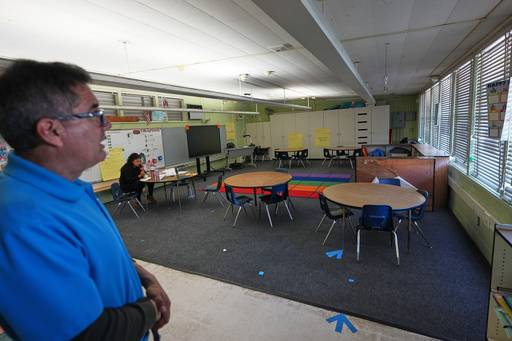Migrant enrollment down at US schools

From Miami to San Diego, schools around the United States are seeing big drops in enrollment of students from immigrant families. In some cases, parents have been deported or voluntarily returned to their home countries, driven out by President Donald Trump’s sweeping immigration crackdown. Others have moved elsewhere inside the United States.
In many school systems, the biggest factor is that far fewer families are coming from other countries after Trump closed the border.
As fewer people cross the US border, administrators in small towns and big cities alike are reporting fewer newcomer students than usual.
In Miami-Dade County Public Schools, 2,550 students have entered the district from another country so far this school year—down from nearly 14,000 last year and more than 20,000 the year before that. School board member Luisa Santos, who attended district schools herself as a young immigrant, said the trend is “a sad reality.”
“I was one of those arrivals when I was 8 years old,” Santos said. “And this country and our public schools—I’ll never get tired of saying it—gave me everything.”
Collectively, the enrollment declines in Miami-Dade erased about $70 million from the district’s annual budget, forcing administrators to scramble to cover the unexpected shortfall.
The drops in immigrant students add to strains on enrollment at many traditional public schools, which have seen overall numbers dip due to demographic changes and students opting for alternatives like private schools and homeschooling. Despite needs for English instruction and social supports, the newcomers in some districts have helped to buoy enrollment and bring critical per-pupil funding in recent years.
Hispanic population
In northern Alabama, Albertville city schools superintendent Bart Reeves has seen the local economy grow along with its Hispanic population, which for decades has been drawn by the area’s poultry processing plants. Albertville soon will be getting its first Target store, a sign of the community’s growing prosperity.
Reeves’ district is home to one of Alabama’s largest Hispanic student populations, with about 60 percent identifying as Hispanic. But Reeves said the district’s newcomer academy at a local high school hasn’t been enrolling any new students.
“That’s just not happening this year with the closure of the border,” said Reeves, who expects the hit to his budget from enrollment declines will cost him about 12 teacher positions.
Some students are self-deporting with their families.
One Sunday morning in August, Edna, a 63-year-old immigrant from El Salvador, got the call she had been dreading. Her friend, a mother from Guatemala with seven young children, had been detained in Lake Worth, Florida, on immigration charges.
The family had prepared for this moment. There were legal documents in place granting temporary custody of the children to Edna, who asked to be identified only by her first name because she fears immigration enforcement.
Back to Guatemala
“I’ll be here, and we’ll be OK,” she recalled telling the oldest child, a 12-year-old boy.
In the weeks that followed, Edna stayed home with two younger kids and got their five older siblings on the bus each day to attend Palm Beach County public schools, where enrollment has fallen by more than 6,000 students this year. One day in September, all seven children boarded a plane to Guatemala to be reunited with their mom, leaving behind neighborhood friends, band practices and the only life they had ever known.
“My house feels like a garden without flowers,” Edna said. “They’re all gone.”
The family is now living in a rural part of Guatemala, out of reach of phone service. School there had already started for the year and the mother, who did not attend school herself as a child, was keeping them home and weighing whether to enroll them next year, Edna said.




















